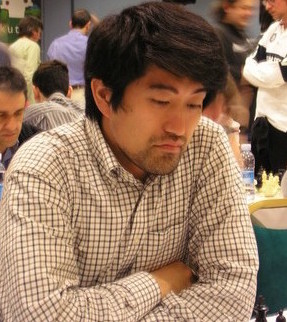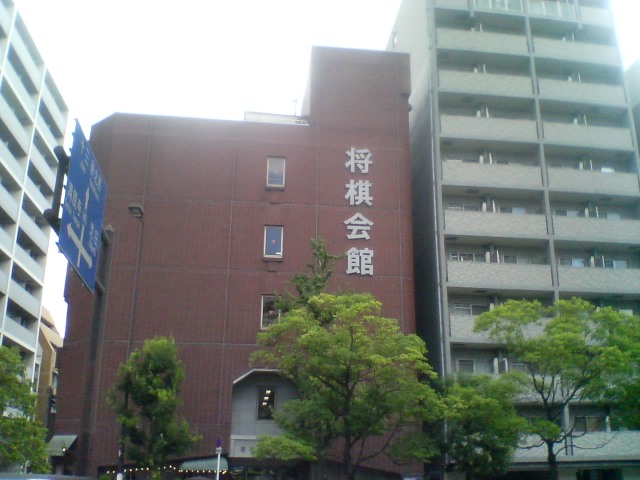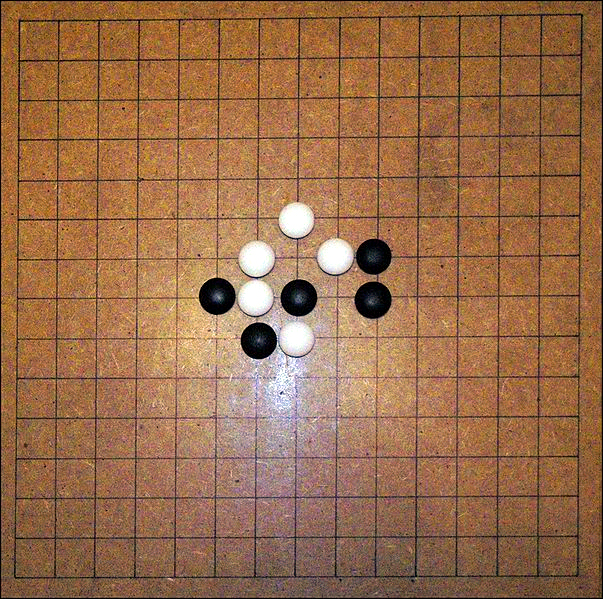|
Meijin
is one of the eight titles in Japanese professional shogi, and is the most prestigious title, along with Ryūō. The word ''meijin'' (名 ''mei'' "excellent, artful", 人 ''jin'' "person") refers to a highly skilled master of a certain field (the various arts found in traditional Japanese culture, such as the Japanese tea ceremony, go, competitive karuta, rakugo, budō). History The Meijin institution started in the 17th century (Edo period), and for around 300 years (1612–1937) was a hereditary title that was passed from the reigning Meijin upon his retirement or death to another selected from three families, as deemed to be worthy. This is known as the Lifetime Meijin system (終生名人制). In 1935, however, the Japan Shogi Association, or JSA, announced that it was abolishing the existing system of succession in favor of something more short-term and reflective of actual playing strength, known as the Real Strength Meijin system (実力名人制). In 1937, the reigni ... [...More Info...] [...Related Items...] OR: [Wikipedia] [Google] [Baidu] |
Yoshiharu Habu
is a professional shogi player and a chess FIDE Master. His master is Tatsuya Futakami. He is the only person to simultaneously hold seven major professional shogi titles at the same time and is also the only person to qualify as a lifetime title holder for seven major titles. In January 2018, Habu became the first professional shogi player to be awarded Japan's People's Honour Award. Early life Yoshiharu Habu was born in Tokorozawa, Saitama in 1970 and moved to Hachioji, Tokyo before entering kindergarten. Habu first encountered shogi in his first year of elementary school, when his classmates taught him how the shogi pieces move. He was so fascinated by the game that his mother entered him in a shogi tournament held at the Hachioji Shogi Club in the summer of 1978. Although Habu was eliminated during the preliminary rounds with a record of 1 win and 2 losses, his parents took him to the shogi club every weekend from October 1978. Habu improved so rapidly that he was promote ... [...More Info...] [...Related Items...] OR: [Wikipedia] [Google] [Baidu] |
Professional Shogi Player
A professional shogi player (将棋棋士 ''shōgi kishi'' or プロ棋士 ''puro kishi'' "professional player") is a shogi player who is usually a member of a professional guild of shogi players. There are two categories of professional players: regular professional and women's professional. All regular professional shogi players are members of the Japan Shogi Association (JSA). However, only regular professional players, who are all male, are considered to be full-fledged members. Women's professional players belong to groups distinct from regular professional players. In Japanese, the term 棋士 ''kishi'' only refers to regular professional players to the exclusion of women's professionals, who are termed 女流棋士 ''joryū kishi.'' History During the Edo period (1603-1868), shogi followed an iemoto system centered around three families (schools): the , the and the . Titles such as Meijin were hereditary and could only be held by members of these three families. These ... [...More Info...] [...Related Items...] OR: [Wikipedia] [Google] [Baidu] |
Toshiyuki Moriuchi
is a Japanese professional shogi player, ranked 9-dan. He is a Lifetime Meijin who won the title eight times, and also a former Ryūō, Kiō and Ōshō title holder. He is also a former senior managing director of the Japan Shogi Association. Early life Moriuchi was born on October 10, 1970, in Yokohama. His grandfather was shogi professional , who died about ten years before Moriuchi was born. When Moriuchi was young and would visit his grandmother's house, she would show him old issues of '' Shogi World'' that she had kept, and this is when Moriuchi first became interested in shogi. Moriuchi started playing in shogi tournaments as an elementary school student and it was there that his rivalry with Yoshiharu Habu began. Habu lived in neighboring Tokyo and was the same age, so the two often participated in the same tournaments. Moriuchi even went to watch Habu win a tournament whose entry was limited to Tokyo residents only. The following year, Moriuchi defeated Habu in the fi ... [...More Info...] [...Related Items...] OR: [Wikipedia] [Google] [Baidu] |
Makoto Nakahara
is a retired Japanese professional shogi player who achieved the rank of 9-dan. He is one of the strongest shogi players of the Shōwa period (1926–1989) and holds the titles of Lifetime Kisei, Lifetime Meijin, , Lifetime Ōi, and Lifetime Ōza. Nakahara served as the president of the Japan Shogi Association from May 2003 until May 2005. He retired from professional shogi in March 2009 at age 61 due to health reasons. Nakahara castle Nakahara won the Kōzō Masuda Award in 1996 for developing the " Nakahara castle" (中原囲い) as a counter strategy to the Side Pawn Capture opening. Major titles and other championships Nakahara appeared in 91 major title matches and won 64 major titles during his career. He won the Kisei title sixteen times, the Meijin title fifteen times, the eleven times, the Ōi title eight times, the Osho title seven times, Oza title six times, and the Kioh title once. He holds the titles of Lifetime Kisei, Lifetime Meijin is one of ... [...More Info...] [...Related Items...] OR: [Wikipedia] [Google] [Baidu] |
Yasuharu Ōyama
Yasuharu Ōyama (大山 康晴 Ōyama Yasuharu, March 13, 1923 - July 26, 1992) was a professional shogi player, 15th Lifetime Meijin and president of Japan Shogi Association (1976 - 1989). He studied shogi under . He won 80 titles (2nd on record), 44 other type tournaments (2nd on record) and 1433 games (2nd on record) in life, and was awarded five lifetime titles: Lifetime Meijin, Lifetime Jūdan, Lifetime Ōi, Lifetime Kisei and Lifetime Ōshō. Among his 80 titles, 18 were the Meijin title (most prestigious title in shogi, along with Ryūō). He has appeared in the Meijin title match 25 times winning 18; he also holds the record for the most consecutive Meijin titles (13 in a row from 1959 to 1971), the most overall Meijin titles, and being the oldest player to challenge for the Meijin title, at age 63 in 1986. Ōyama played as professional from 1940 until his death in 1992. His students include Michio Ariyoshi, Isao Nakata and Hisashi Namekata. He was awarded as honorary ci ... [...More Info...] [...Related Items...] OR: [Wikipedia] [Google] [Baidu] |
Shogi
, also known as Japanese chess, is a strategy board game for two players. It is one of the most popular board games in Japan and is in the same family of games as Western chess, ''chaturanga, Xiangqi'', Indian chess, and '' janggi''. ''Shōgi'' means general's (''shō'' ) board game (''gi'' ). Western chess is sometimes called (''Seiyō Shōgi'' ) in Japan. Shogi was the earliest chess-related historical game to allow captured pieces to be returned to the board by the capturing player. This drop rule is speculated to have been invented in the 15th century and possibly connected to the practice of 15th century mercenaries switching loyalties when captured instead of being killed. The earliest predecessor of the game, chaturanga, originated in India in the sixth century, and the game was likely transmitted to Japan via China or Korea sometime after the Nara period."Shogi". ''Encyclopædia Britannica''. 2002. Shogi in its present form was played as early as the 16th century, while ... [...More Info...] [...Related Items...] OR: [Wikipedia] [Google] [Baidu] |
Ryūō
Ryūō (also Ryu-O, Ryu-oh, Ryuuou; in Japanese 龍王, 竜王, lit. "Dragon King") is an annual Japanese professional shogi tournament and the title of its winner. The current Ryūō title holder is Sōta Fujii. The Ryūō Tournament (''Ryūō-sen'' 竜王戦) is sponsored by the ''Yomiuri Shimbun'' as well as the title awarded to its winner. It is one of the eight major professional shogi title matches and was first held in 1988. Among the eight titles in the professional shogi titleholder system, Ryūō and Meijin are the most prestigious ones. However, the Ryūō title gives out the highest monetary prizeeven more than the Meijin title. Cash prizes are ¥44,000,000 for the winner of championship and new Ryūō titleholder, and ¥16,500,000 for the loser. Additional compensation includes ¥14,500,000 for the previous titleholder and ¥7,000,000 for the challenger. This title should not be confused with that of Amateur Ryūō which is awarded each year to the winner of the Amate ... [...More Info...] [...Related Items...] OR: [Wikipedia] [Google] [Baidu] |
Japan Shogi Association
The , or JSA, is the primary organizing body for professional shogi in Japan. The JSA sets the professional calendar, negotiates sponsorship and media promotion deals, helps organize tournaments and title matches, publishes shogi-related materials, supervises and trains apprentice professionals as well as many other activities. History For much of its early history, shogi followed an iemoto system centered around three families (schools): the , the and the . The Meijin title was hereditary and could only be held by members of these three families. These three schools were supported by the Tokugawa shogunate and thus controlled the professional shogi world up until 1868 when the Meiji Restoration began. By the time , the eighth and last head of the Itō school and the 11th Hereditary Meijin, had died in 1893, the influence of the families had decreased to such an extent that they had no real power at all. In 1921, there were three groups of professional players in the Tokyo ar ... [...More Info...] [...Related Items...] OR: [Wikipedia] [Google] [Baidu] |
Ichitarō Doi
was a Japanese professional shogi player who achieved the rank of 8-dan (the highest rank at the time), and was the first president of the Japan Shogi Association. Doi was a student of , the thirteenth Lifetime Meijin, along with contemporary colleagues Yoshio Kimura, Yasujirō Kon, Chōtarō Hanada, and Tōichi Watanabe. Shogi professional Born in Matsuyama, Doi eventually moved to the Yūrakuchō district in Tokyo. With the guidance of teacher Kinjirō Sekine, Ichitarō Doi reached the rank of 4-dan in 1910. In 1917, Doi reached 8-dan. He along with Kinjirō Sekine, Sankichi Sakata (a potential Meijin candidate), and Kaiō Takeuchi (竹内翁) was one of the few players with an 8-dan rank at the time that Sekine became the thirteenth Meijin. Doi's record against Sakata was 1 win and 1 loss. As a strong player, when the Mejin system shifted to a tournament competition, Doi was one of the 8 competitors in the very first tournament league in 1937, all of which were defea ... [...More Info...] [...Related Items...] OR: [Wikipedia] [Google] [Baidu] |
Yoshio Kimura (shogi)
was a Japanese professional shogi player who achieved the rank of 8-dan (which was the highest dan level during his time). He was a Lifetime Meijin who won the title eight times. At the time, the Meijin title was the only shogi title. Gallery File:Prince Chichibu in Shogi Contest 1952 Scan10009.JPG, Kimura (right) playing against Yasuharu Ōyama in 1952 with Prince Chichibu , was the second son of Emperor Taishō (Yoshihito) and Empress Teimei (Sadako), a younger brother of Emperor Shōwa (Hirohito) and a general in the Imperial Japanese Army. As a member of the Imperial House of Japan, he was the patron of severa ... present File:The board when Oyama defeated Kimura.JPG, board when Ōyama defeated Kimura (1952 July 15) File:Yoshio Kimura Shogi 1951 Scan10012.JPG, Kimura (1951 January 27) References External links *将棋DB2:1952-07-12 名人戦 大山康晴 vs 木村義雄 Japanese shogi players Deceased professional shogi players Recipients of the Medal with Pur ... [...More Info...] [...Related Items...] OR: [Wikipedia] [Google] [Baidu] |
Renju
''Renju'' (Japanese: 連珠) is a professional variant of gomoku. It was named renju by Japanese journalist Ruikou Kuroiwa (黒岩涙香) on December 6, 1899 in a Japanese newspaper ''Yorozu chouhou'' (萬朝報). The name "renju" comes from the Japanese language, and means "connected pearls" in Japanese. The game is played with black and white stones on a 15×15 gridded go board. The rule of renju weakens the advantages for the first player (Black) in gomoku by adding special restrictions for Black. Rules Opening rules Unlike gomoku, renju has a unique sequence of opening moves called an "opening rule". There are several certified opening rules. The list of requirements for new opening rules as approved by the Renju International Federation (RIF) in 2003 was: I. Traditions * The basic renju rules must be kept. * The opening stage must not exceed 5 moves. * All 26 canonical openings must be possible and only 26 canonical openings can be possible. * All present realistic var ... [...More Info...] [...Related Items...] OR: [Wikipedia] [Google] [Baidu] |
Go (game)
Go is an abstract strategy board game for two players in which the aim is to surround more territory than the opponent. The game was invented in China more than 2,500 years ago and is believed to be the oldest board game continuously played to the present day. A 2016 survey by the International Go Federation's 75 member nations found that there are over 46 million people worldwide who know how to play Go and over 20 million current players, the majority of whom live in East Asia. The playing pieces are called stones. One player uses the white stones and the other, black. The players take turns placing the stones on the vacant intersections (''points'') of a board. Once placed on the board, stones may not be moved, but stones are removed from the board if the stone (or group of stones) is surrounded by opposing stones on all orthogonally adjacent points, in which case the stone or group is ''captured''. The game proceeds until neither player wishes to make another move. Wh ... [...More Info...] [...Related Items...] OR: [Wikipedia] [Google] [Baidu] |





